Articles About God's Appointed Times
Are the Festivals (Moedim) for Today?
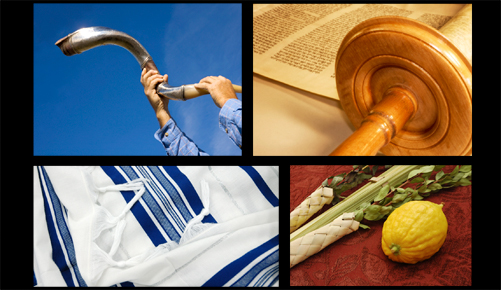 O
ne of the questions that inevitably arises when people began to see the beauty of the
Biblical Festivals is whether or not they are for believers today. The theological categories in
which many modern-day believers have been schooled insist that the Festivals were "merely shadows" of the person and work of Messiah Yeshua, and that with His coming they are no
longer needed. Some would go further and even say that to celebrate the Biblical Moedim is to
detract from the central position which Yeshua should hold in our theology and worship. But
what do the Scriptures say about the place of the Moedim in the life of God's people?
O
ne of the questions that inevitably arises when people began to see the beauty of the
Biblical Festivals is whether or not they are for believers today. The theological categories in
which many modern-day believers have been schooled insist that the Festivals were "merely shadows" of the person and work of Messiah Yeshua, and that with His coming they are no
longer needed. Some would go further and even say that to celebrate the Biblical Moedim is to
detract from the central position which Yeshua should hold in our theology and worship. But
what do the Scriptures say about the place of the Moedim in the life of God's people?
First, we should remember that the word used for the Festivals is the Hebrew d[wm , "appointed time,"and that this is the same word that is found in the opening creation narrative in Genesis 1.
Here, the sun and moon are given especially for "....signs and seasons."The word translated "seasons" [NASB] is md[wm , mo'dim the exact same word used to describe "My appointed times" in Leviticus 23 and elsewhere in the Torah. Why is this important? It is important because it shows that the Festivals which God reveals in the Torah are connected with creation first. That is to say, God designed the universe itself (the sun and moon and the whole planetary structure) in order to point to and regulate the Festivals, the "Moedim." Thus, the Moedim are first and foremost a part of the creative order, not merely a part of the covenant made with Israel at Sinai....

Should Believers in Yeshua Keep the Jewish Feasts?
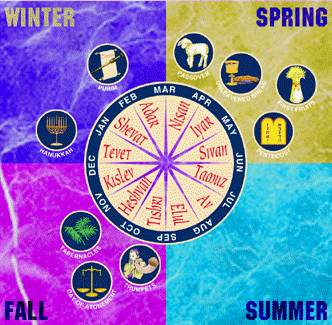 I
've been encouraged to see all the young people wearing WWJD wristbands. I was delighted to think that when they were going through their day, facing challenges or perhaps in a 'moral crisis', they would ask themselves, "What Would Jesus Do?" I prayed for them to have the courage to then follow through on their faith in those challenging moments.
As time has passed I've seen fewer and fewer WWJD wristbands, and I figured another fad has come and gone. At my age, I've seen so many fads pass by, I feel like I'm at a NASCAR race! But I've thought about WWJD a bit more and realized how difficult it must be for people wanting to understand "What Jesus would do?", especially when looking at the New Covenant Scriptures outside of their natural Jewish setting. Perhaps it would be more helpful to wear a WWYD wristband...
What Would Yeshua Do?
I
've been encouraged to see all the young people wearing WWJD wristbands. I was delighted to think that when they were going through their day, facing challenges or perhaps in a 'moral crisis', they would ask themselves, "What Would Jesus Do?" I prayed for them to have the courage to then follow through on their faith in those challenging moments.
As time has passed I've seen fewer and fewer WWJD wristbands, and I figured another fad has come and gone. At my age, I've seen so many fads pass by, I feel like I'm at a NASCAR race! But I've thought about WWJD a bit more and realized how difficult it must be for people wanting to understand "What Jesus would do?", especially when looking at the New Covenant Scriptures outside of their natural Jewish setting. Perhaps it would be more helpful to wear a WWYD wristband...
What Would Yeshua Do?
When we see Yeshua from a Jewish frame of reference it becomes easier to figure out just what He would do. Like on holidays, for instance, we know what Yeshua would do, and what He wouldn't. We know from Scripture that Yeshua celebrated Hanukkah (John 10:22,23), the Feast of Tabernacles (John 7:2,37) and Passover. In fact, the reason that we know Yeshua ministered for three + years is that John's Gospel records three Passovers that Yeshua celebrated (John 2:23; 6:4; 13:1). Which brings me to my point: celebrating Messiah's Resurrection in light of Passover.
Today in Christendom it's amazing how many churches expect a large turnout for Easter, and yet never expect those same people to return for the following week's service. For many, rather than a celebration of the empty tomb, Easter is a "religious" holiday with an empty message; but, it doesn't have to be this way. "What would Yeshua do?" at this time of year?

Holy Days in Yeshua's Time
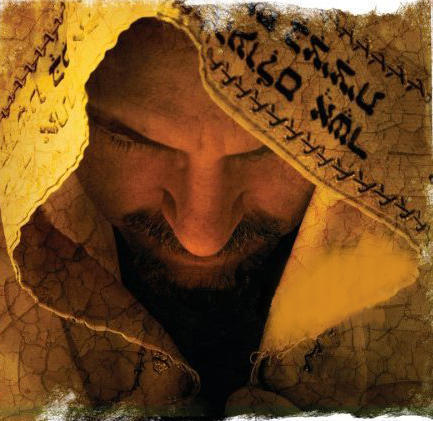 T he Jewish context of the life and ministry of Yeshua the Messiah is the source of a constantly renewed sense of wonder. We marvel at the mystery of the Incarnation as we contemplate the earthly life of the Lord and the Jewish trappings that accompany it. And we are struck by the part played by the Temple, its services and the other Jewish observances that are so carefully described in the Gospels. This is the world that Yeshua entered, we remind ourselves. This is the world that His presence reshaped forever.
T he Jewish context of the life and ministry of Yeshua the Messiah is the source of a constantly renewed sense of wonder. We marvel at the mystery of the Incarnation as we contemplate the earthly life of the Lord and the Jewish trappings that accompany it. And we are struck by the part played by the Temple, its services and the other Jewish observances that are so carefully described in the Gospels. This is the world that Yeshua entered, we remind ourselves. This is the world that His presence reshaped forever.
The Hebrew month of Tishrei is the seventh month of the Jewish calendar. In truth, there are several anniversaries in the Jewish cycle of months that might be thought of as "New Year" dates, and Yom Teruah (the Head of the Year) could be thought of as the anniversary of Israel's civil year. Although not specifically named, Yom Teruah and the ten intervening "Days of Awe" leading up to and concluding with Yom Kippur (the Day of Atonement) are described in Leviticus 23:23-28:
Then the LORD spoke to Moses, saying, "Speak to the children of Israel, saying: ‘In the seventh month, on the first day of the month, you shall have a sabbath-rest, a memorial of blowing of trumpets, a holy convocation. You shall do no customary work on it; and you shall offer an offering made by fire to the LORD.'" And the LORD spoke to Moses, saying: "Also the tenth day of this seventh month shall be the Day of Atonement. It shall be a holy convocation for you; you shall afflict your souls, and offer an offering made by fire to the LORD. And you shall do no work on that same day, for it is the Day of Atonement, to make atonement for you before the LORD your God."..
Articles about the Sabbath
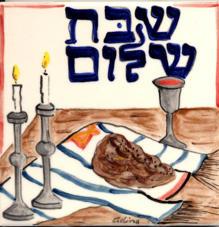 T
he seventh day of the week, the day commonly known as Saturday, is the Sabbath day of the Lord the Almighty God of Israel. It was ordained of God as a day of physical rest for all mankind.
T
he seventh day of the week, the day commonly known as Saturday, is the Sabbath day of the Lord the Almighty God of Israel. It was ordained of God as a day of physical rest for all mankind.
The word Sabbath implies rest, peace, tranquillity and refreshment. And who will doubt but that in this turbulent and confused world every soul on earth is in need of spiritual rest and refreshment. Consequently, those who faithfully remember the Sabbath of the Most High and draw apart from the world each weekend to worship Him on His holy day, will receive the spiritual blessings promised in His Holy Word; blessings that will find full scope in the ages to come. . ...

Articles about Passover
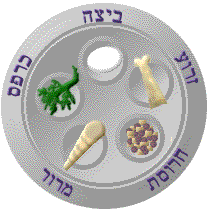 W
hy is this night different from all other nights?
W
hy is this night different from all other nights?
One of the most significant Jewish holidays, Passover, or Pesach in Hebrew, recalls and rejoices over the Israelites' redemption from slavery in Egypt. (Leviticus 23:4-8) The symbolic elements of the feast cause us not only to look back and remember what the Lord did for our people in the past; they also foreshadow a greater redemption through Yeshua the Passover Lamb.
Jewish people around the world have celebrated Passover for thousands of years; however, most do not understand the ultimate significance of the festival. In this section, you'll find several articles and explanations of the meaning of this traditional Jewish feast that Yeshua celebrated with his talmudim.
Articles Early First Fruits
 T
he day following the first day of "Unleavened Bread " is called Reishit Katzir, the "beginning of the harvest" (sometimes confusingly called the Feast of Firstfruits). In ancient times, on this day a sheaf (omer) of barley (the first grain crop to ripen) was waved before the LORD in a prescribed ceremony to mark the start of the counting of the omer, thereby initiating the forty nine day countdown to the harvest festival of Shavu'ot:
T
he day following the first day of "Unleavened Bread " is called Reishit Katzir, the "beginning of the harvest" (sometimes confusingly called the Feast of Firstfruits). In ancient times, on this day a sheaf (omer) of barley (the first grain crop to ripen) was waved before the LORD in a prescribed ceremony to mark the start of the counting of the omer, thereby initiating the forty nine day countdown to the harvest festival of Shavu'ot:
And the LORD spoke to Moses, saying, "Speak to the people of Israel and say to them, "When you come into the land that I give you and reap its harvest, you shall bring the sheaf (omer) of the first (reshit) of your harvest (katzir) to the priest, and he shall wave the sheaf before the LORD, so that you may be accepted. On the day after the Sabbath the priest shall wave it. And on the day when you wave the sheaf, you shall offer a male lamb a year old without blemish as a burnt offering to the LORD." (Lev. 23:9-12)
In other words, on this day the priest would wave a sheaf (omer) of green barley before the LORD as a symbolic gesture of dedicating the coming harvest to Him.. ...

Articles about Shavuot
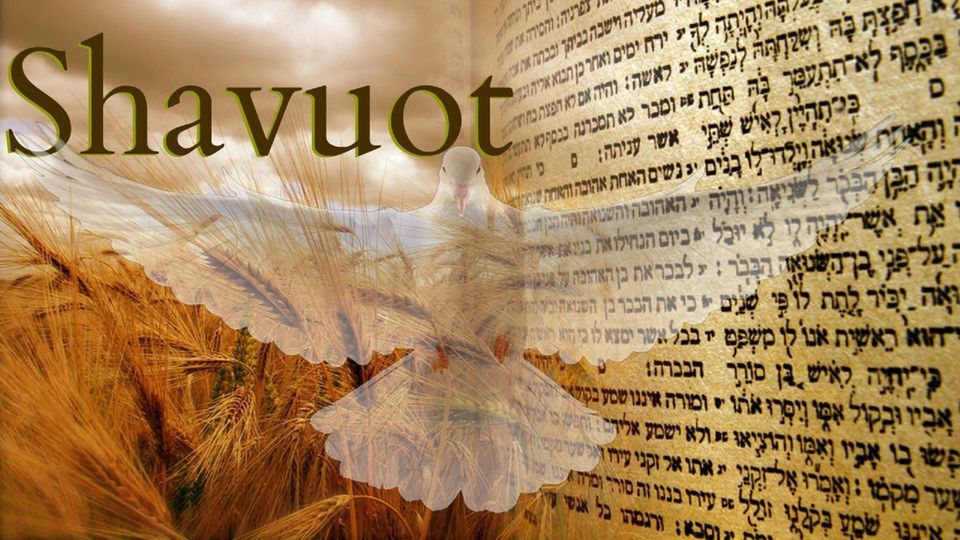 I
n Bible times, this holiday was an agricultural festival: a time for our people to present the firstfruits of the crops to God, gratefully giving back to the Lord that which He had given to us. A firstfruits offering was actually presented at the end of Passover (Leviticus 23:9-14). Then, seven weeks after Passover came Shavuot. This feast literally means "weeks." Shavuot fell fifty days after the Sabbath which came during Passover (Leviticus 23:15, 16), thus in Greek it was called Pentecost, or "fiftieth."
I
n Bible times, this holiday was an agricultural festival: a time for our people to present the firstfruits of the crops to God, gratefully giving back to the Lord that which He had given to us. A firstfruits offering was actually presented at the end of Passover (Leviticus 23:9-14). Then, seven weeks after Passover came Shavuot. This feast literally means "weeks." Shavuot fell fifty days after the Sabbath which came during Passover (Leviticus 23:15, 16), thus in Greek it was called Pentecost, or "fiftieth."
After the Temple was destroyed in A.D. 70, the agricultural rites associated with the biblical feasts could no longer be observed. Jewish tradition made a connection between Shavuot and the giving of the Torah at Mt. Sinai, which was understood to be the fiftieth day after the Israelites came out of Egypt. The holiday also came to be called, "The Season of the Giving of the Law." To this day, it has become traditional to observe Shavuot by staying up all night and studying Torah.
In Acts 2 and 3, the New Covenant records that the Holy Spirit was poured out at Shavuot. As a result, 3,000 Jewish people recognized that Yeshua was indeed the Messiah, and they turned to God. These souls were the firstfruits of God's gospel harvest. Today, Jewish believers in Yeshua participate in Shavuot in various ways, as you'll see in this section.

Articles about Yom Teruah
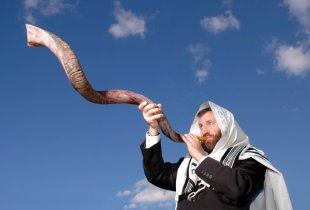
O n the 1st day of the Seventh month (Tishrei) the Torah commands us to observe the holy day of Yom Teruah which means "Day of Shouting" (Lev 23:23-25; Nu 29:1-6). Yom Teruah is a day of rest on which work is forbidden. One of the unique things about Yom Teruah is that the Torah does not say what the purpose of this holy day is. The Torah gives at least one reason for all the other holy days and two reasons for some. The Feast of Matzot (Unleavened Bread) commemorates the Exodus from Egypt but it is also a celebration of the beginning of the barley harvest (Exodus 23:15; Lev 23:4–14). The Feast of Shavuot (Weeks) is a celebration of the wheat harvest (Ex 23:16; 34:22). Yom Ha-Kippurim is a national day of atonement as described in great detail in Leviticus 16. Finally the Feast of Sukkot (Booths) commemorates the wandering of the Israelites in the desert but it is also a celebration of the ingathering of agricultural produce (Ex 23:16). In contrast to all these Torah festivals, Yom Teruah has no clear purpose other than that we are commended to rest on this day.
Today few people remember the biblical name of Yom Teruah and instead it is widely known as "Rosh Hashanah" which literally means “head of the year” and hence also "New Years" The transformation of Yom Teruah (Day of Shouting) into Rosh Hashanah (New Years) is the result of pagan Babylonian influence upon the Jewish nation. The first stage in the transformation was the adoption of the Babylonian month names.
But while some Jews believe in an annual day of accounting for one's actions, for us the blast of the shofar at Yom Teruah is not just a call to repentance, but a reminder of Yeshua's return. "For the Lord Himself will descend from heaven with a shout, with the voice of the archangel and with the trumpet of God. And the dead in Messiah will rise first" (1Thessalonians 4:16).

Articles about Yom Kippur
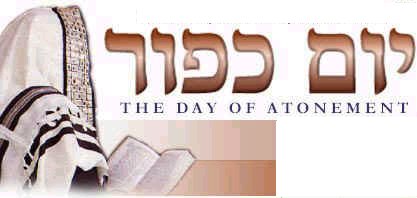 T
he term "High Holidays" refers to Yom Teruah (the Jewish New Year) and
Yom Kippur together. Literally "the Day of Atonement," Yom Kippur concludes
the Ten Days of Awe. It is the holiest and most somber day of the year. Lev.
23:27-32.
Yom Kippur can be somewhat of a conundrum to Jewish believers in Yeshua. Do
we fast and confess our sins like the rest of the Jewish community or do we
rejoice in the knowledge that we're forgiven in Messiah? Many Jewish
believers view Yom Kippur as a time for identification with our Jewish
people, introspection for ourselves and intercession for loved ones, knowing
all the while that Jesus is the One that makes us at one with God.
T
he term "High Holidays" refers to Yom Teruah (the Jewish New Year) and
Yom Kippur together. Literally "the Day of Atonement," Yom Kippur concludes
the Ten Days of Awe. It is the holiest and most somber day of the year. Lev.
23:27-32.
Yom Kippur can be somewhat of a conundrum to Jewish believers in Yeshua. Do
we fast and confess our sins like the rest of the Jewish community or do we
rejoice in the knowledge that we're forgiven in Messiah? Many Jewish
believers view Yom Kippur as a time for identification with our Jewish
people, introspection for ourselves and intercession for loved ones, knowing
all the while that Jesus is the One that makes us at one with God.
Is the holiest day of the Jewish year. A time to consider Yeshua as our atonement. (Leviticus 23:26-32)
Literally "the Day of Atonement," Yom Kippur concludes the Ten Days of Awe. It is the holiest and most somber day of the year. (Lev. 23:27-32)
In ancient times, one day of the year, the High Priest entered the Holy of Holies to put the blood of the sacrificed animal on the altar as a sin offering. Through faith, obedience to God's precise instructions resulted in atonement, or covering, for sin. Today, Yom Kippur is a day of fasting and reflecting upon one's sin.

Articles about Sukkot
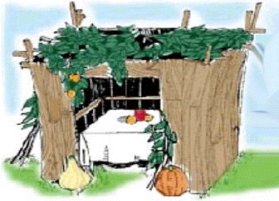 S
ukkot means "booths," or "tabernacles," and this week-long holiday is also known as the Feast of Tabernacles. (Leviticus 23:33-34) It is a joyous harvest festival and a reminder of how God sustained the children of Israel during their wilderness wanderings. The people were to dwell in temporary booths, and to rejoice over God's provision as well as his presence. Many Jewish people still build booths in their yards or synagogues for this holiday, and take their meals in these temporary dwelling places.
S
ukkot means "booths," or "tabernacles," and this week-long holiday is also known as the Feast of Tabernacles. (Leviticus 23:33-34) It is a joyous harvest festival and a reminder of how God sustained the children of Israel during their wilderness wanderings. The people were to dwell in temporary booths, and to rejoice over God's provision as well as his presence. Many Jewish people still build booths in their yards or synagogues for this holiday, and take their meals in these temporary dwelling places.
As you'll see in this section, Sukkot is a powerful reminder of how God tabernacled with us in the past, how he continues to do so today and how he will ultimately dwell with us forever, through Yeshua who lives and reigns in the hearts of those who believe in him. The Feast of Tabernacles also contains two powerful elements, water and light, that foreshadowed Messiah, who is gives us Living Water and who is the Light of the world. There's much to unpack regarding Sukkot and you'll want to "camp out" in this section for awhile.

Articles about Rosh Hodesh

I n Hebrew, Rosh Chodesh means, literally, "head of the month" or "first of the month." Rosh Chodesh is the first day of any new month. If a month is 30 days long, then the 30th day is treated as part of the Rosh Chodesh for the next month, and the Rosh Chodesh for next month extends for two days (the 30th of the earlier month and the 1st of the later month).
In ancient times, Rosh Chodesh was a significant festival day. At that time, the new months were determined by observation. Each month began when the first sliver of moon became visible after the dark of the moon. Observers would watch the sky at night for any sign of the moon. If they saw the moon, they would report their sightings to the Sanhedrin, which would interrogate them to make sure that they were not mistaken. Where in the sky did the moon appear? Which direction was it pointing? If two independent, reliable eyewitnesses confirmed that the new moon had appeared and described it consistently, the Sanhedrin would declare the new month and send out messengers to tell people when the month began.
The day after the moon appeared was a festival, announced with the sounding of the shofar, commemorated with solemn convocations, family festivities and special sacrifices. The importance of this holiday in ancient times should not be underestimated. The entire calendar was dependent upon these declarations; without the declarations, there would be no way of knowing when holidays were supposed to occur.